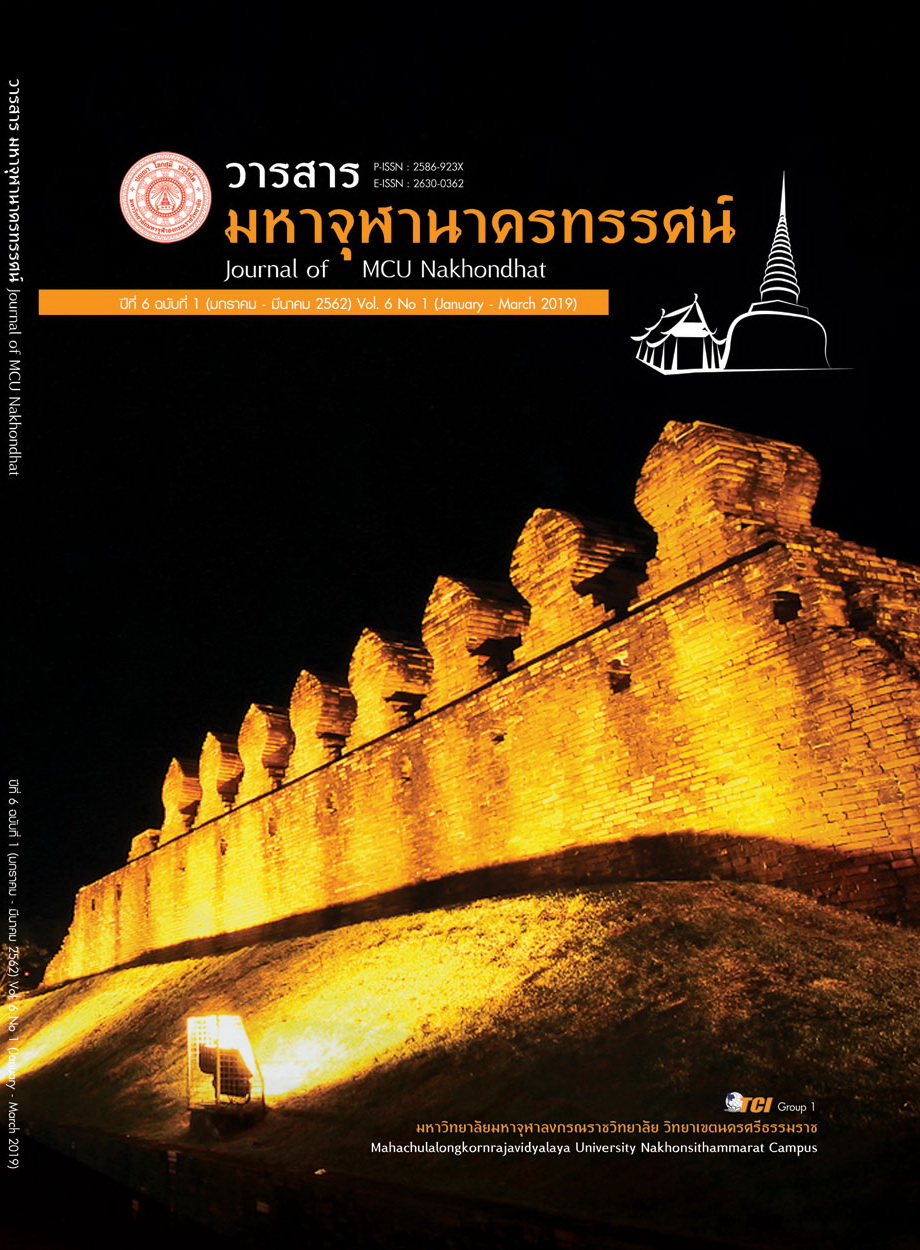A MODEL OF SELF CARE IN HYPERTENSIVE PATIENT AT FORT PRAJAKSILAPAKOM HOSPITAL UDON THANI PROVINCE.
Main Article Content
Abstract
The study of self-care model of hypertensive patients at Prachaksinlapakhom Fort Hospital Udon Thani Province with the objectives; to study the problems of self-care of hypertensive patients; to determine the pattern of self-care of hypertensive patients and to test and to evaluate the use of self-care model of hypertensive patients of Prachaksinlapakhom Fort Hospital Udon Thani Province. This research was mixed (Mixed Method) with 3 phases.
The results of research were found as follows:
Phase 1: The results of the study of self-care problems of hypertensive patients Prachaksinlapakhom Fort Hospital Udon Thani Province. Step 1 : Using a quantitative questionnaire, the results of the analysis of the level of self-care problems of hypertensive patients from percentage, mean score and standard deviation Level of overall image change have the highest level of importance and problems, Step 2 : is a quality analysis by applying the problem from step 1 to analyze to confirm the condition of the problem of self-health care of patients with hypertension use a specific target group of 60 people. Tools used at this step is a question analyze data, use frequencies from counting, then calculate the percentage and average values obtain information on 8 problem conditions and supplementary issues, including 1) health information awareness, 2) preparation, 3) health care, continuous health behavior.
Phase 2 : The results of determining the self-care model of hypertensive patients at Prachaksinlapakhom Fort Hospital Udon Thani Province by organizing a discussion, exchange, learn of experts and those who multiply their qualifications Summarizing the results of certification of activities that will be used to develop self-care of hypertensive patients, namely 1) preventive activities include smoking cessation stop drinking alcohol, etc. 2) Relief activities include health information awareness Recognize how to behave in order to be healthy and 3) Immunization activities consist of preparation, motivation to change from health risk behaviors, etc. Using the results to determine the pattern and certification of self-care model of hypertensive patients, the findings are 1) obtain the self-care model of hypertensive patients 2) obtain the patient care network via social media channels in order to meet the needs of patients and to bring the patient care system into the modern age.
Phase 3 : The results of the experiment and evaluation of using the patient's health care model Hypertension, Prachaksinlapakhom Fort Hospital Udon Thani Province, The experiment using the self-care model of hypertensive patients cannot use with the control group, it is a single group experimental group, using a specific number of 27 people to test their own health care of patients with hypertension after experimenting with social media groups on Facebook it was found that the knowledge was improved significantly at p <0.05. Self-care improved. In food control, exercise and emotions, there was a significant decrease in blood pressure at P <0.05 and body mass index, waist circumference decreases.
Summarizing the results of the evaluation of the experiment using the self-care model of hypertensive patients found that the self-management of patients. There are results that follow which reflect the strength of self-reliance, sufficient and sustainable, as a result of the well-being, eating far away from the disease, the appropriate technology network via social media to help the hypertensive patients to take care of themselves and without complications.
Article Details
References
เนติมา คูนีย์. (2557). สถานการณ์ปัจจุบันและรูปแบบการบริการด้านโรคไม่ติดต่อเรื้อรัง สถาบันวิจัยและประเมินเทคโนโลยีทางการแพทย์. กรุงเทพมหานคร: กรมการแพทย์ กระทรวงสาธารณสุข โรงพิมพ์อาร์ตควอลิไฟท์.
ปฐญาภรณ์ ลาลุน. (2554). พฤติกรรมการดูแลตนเองของผู้ป่วยโรคความดันโลหิตสูงที่มารับบริการแผนกผู้ป่วยนอกอายุรกรรม. โรงพยาบาลศูนย์ การแพทย์สมเด็จพระเทพรัตนราชสุดาฯ มหาวิทยาลัยศรีนครินทรวิโรฒ.
ประทีป จินงี่. (2540). การวิเคราะห์พฤติกรรมและการปรับเปลี่ยนพฤติกรรมทางชีวภาพ (Biofeedback) เอกสารประกอบการสอน. สถาบันวิจัยพฤติกรรมศาสตร์ มหาวิทยาลัยศรีนครินทร์ทรวิโรฒ.
ประเสริฐ อัสสันตชัย. (2552). ปัญหาสุขภาพที่พบบ่อยในผู้สูงอายุและการป้องกัน. กรุงเทพมหานคร: ยูเนี่ยน ครีเอชั่น.
โรงพยาบาลค่ายประจักษ์ศิลปาคม จังหวัดอุดรธานี. (2560). งานประชาสัมพันธ์. โรงพยาบาลค่ายประจักษ์ศิลปาคม จังหวัดอุดรธานี.
สำเริง จันทรสุวรรณ. (2541). สถิติสำหรับการวิจัยทางสังคมศาสตร์. เอกสารประกอบการสอนภาควิชาสังคมวิทยาและมนุษย์วิทยา. คณะมนุษย์ศาสตร์และสังคมศาสตร์ มหาวิทยาลัยขอนแก่น.
อังศินันท์ อินทรกำแหง. (2550). เชาว์สุขภาพ : รายงานการวิจัย การสำรวจสภาวะสุขภาพอนามัย ของประเทศไทยโดยการตรวจสุขภาพ . สถาบันการวิจัยพฤติกรรมศาสตร์ มหาวิทยาลัยศรีนครินทรวิโรฒ.
Sarah E. Dorff. (2012). Characterization of Variants in the Hypertension-Associated Gene STK39. Dissertation submitted to the faculty of the Graduate School of the University of Maryland Baltimore in partial fulfillment of the requirements for the degree of Doctor of Philosophy.
WHO. (1986). Ottawa Charter for Health Promotion.First International Conference on Health Promotion, Ottawa, 21 November 1986. World Health Organization. เรียกใช้เมื่อ 29 May 2018 จาก https://www.who.int/ hpr/archive/does/ottawa.html
World Health Organization. (2017). World Health Organization. เรียกใช้เมื่อ 12 May 2018 จาก apps.who.int>iris>9241562943-tha


